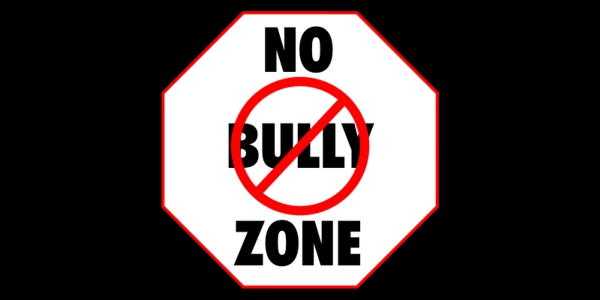The CDC believes that understanding bullying is crucial. Bullying is a form of youth violence defined as any unwanted aggressive behavior(s) by another youth or group of youths who are not siblings or current dating partners that involves an observed or perceived power imbalance and is repeated multiple times or is highly likely to be repeated. Bullying may inflict harm or distress on the targeted youth including physical, psychological, social, or educational harm.1 Bullying can include aggression that is physical (hitting, tripping), verbal (name calling, teasing), or relational/ social (spreading rumors, leaving out of group). A young person can be a perpetrator, a victim, or both (also known as “bully/victim”). Bullying can also occur through technology and is called electronic aggression or cyber-bullying. Electronic aggression is bullying that occurs through e-mail, a chat room, instant messaging, a website, text messaging, or videos or pictures posted on websites or sent through cell phones.2
Why is bullying a public health problem?
Bullying is widespread in the United States.
- In a 2013 nationwide survey, 20% of high school students reported being bullied on school property in the 12 months preceding the survey.3
- An estimated 15% of high school students reported in 2013 that they were bullied electronically in the 12 months before the survey.3
- During the 2012-2013 school year, 8% of public school students ages 12-18 reported being bullied on a weekly basis.4
How does bullying affect health?
Bullying can result in physical injury, social and emotional distress, and even death. Victimized youth are at increased risk for depression, anxiety, sleep difficulties, and poor school adjustment. Youth who bully others are at increased risk for substance use, academic problems, and violence later in adolescence and adulthood.5 Compared to youth who only bully, or who are only victims, bully-victims suffer the most serious consequences and are at greater risk for both mental health and behavior problems.6
Who is at risk for bullying?
Different factors can increase a youth’s risk of engaging in or experiencing bullying.7 However, the presence of these factors does not always mean that a young person will bully others or be bullied.
Some of the factors associated with a higher likelihood of engaging in bullying behavior include:
- Externalizing problems, such as defiant and disruptive behavior
- Harsh parenting by caregivers
- Attitudes accepting of violence
Some of the factors associated with a higher likelihood
of victimization include: - Poor peer relationships
- Low self-esteem
- Perceived by peers as different or quiet
How can we prevent bullying?
The ultimate goal is to stop bullying before it starts. Research on preventing and addressing bullying is still developing. School-based bullying prevention programs are widely implemented, but infrequently evaluated. Based on a review of the limited research on schoolbased bullying prevention, the following program elements are promising:8
- Improving supervision of students
- Using school rules and behavior management techniques in the classroom and throughout the school to detect and address bullying by providing consequences for bullying
- Having a whole school anti-bullying policy, and enforcing that policy consistently
- Promoting cooperation among different professionals and between school staff and parents
How does CDC approach bullying prevention?
CDC uses a four-step approach to address public health problems like bullying.
Step 1: Define and monitor the problem
Before we can prevent bullying, we need to know how big the problem is, where it is, and who it affects. CDC learns about a problem by gathering and studying data. These data are critical because they help us know where prevention is most needed.
Step 2: Identify risk and protective factors
It is not enough to know that bullying is affecting a certain group of people in a certain area. We also need to know why. CDC conducts and supports research to answer this question. We can then develop programs to reduce or get rid of risk factors and increase protective factors.
Step 3: Develop and test prevention strategies
Using information gathered in research, CDC develops and tests strategies to prevent bullying.
Step 4: Ensure widespread adoption
In this final step, CDC shares the best prevention strategies. CDC may also provide funding or technical help so communities can adopt these strategies.
Where can I learn more?
Centers for Disease Control and Prevention
Federal Partners in Bullying Prevention
Surgeon General’s Report on Youth Violence
References
- Gladden RM, Vivolo-Kantor AM, Hamburger ME, Lumpkin CD. Bullying surveillance among youths: Uniform definitions for public health and recommended data elements, Version 1.0. Atlanta, GA; National Center for Injury Prevention and Control, Centers for Disease Control and Prevention and U.S. Department of Education; 2013.
- David-Ferdon C, Hertz MF. Electronic media and youth violence: A CDC issue brief for researchers. Atlanta, GA: Centers for Disease Control and Prevention; 2009.
- Centers for Disease Control and Prevention. Youth risk behavior surveillance—United States, 2013. MMWR, Surveillance Summaries 2014;63(SS4).
- Robers S, Zhang A, Morgan RE, Musu-Gillette L. Indicators of School Crime and Safety: 2014 (NCES 2015-072/NCJ 248036). Washington, D.C.: National Center for Education Statistics, U.S. Department of Education, and Bureau of Justice Statistics, Office of Justice Programs, U.S. Department of Justice; 2015.
- Farrington D, Baldry A. Individual risk factors for school bullying. Journal of Aggression, Conflict and Peace Research. 2010; 2(1):4-16.
- Haynie DL, Nansel T, Eitel P, et al. Bullies, victims, and bully/victims: Distinct groups of at-risk youth. The Journal of Early Adolescence. 2011;21(1):29-49.
- Marini ZA, Dane AV, Bosacki SL, Cura YLC. Direct and indirect bully‐victims: differential psychosocial risk factors associated with adolescents involved in bullying and victimization. Aggressive Behavior. 2006;32(6):551-569.
- Farrington DP, Ttofi MM. School-based programs to reduce bullying and victimization. Systematic review for The Campbell Collaboration Crime and Justice Group; 2010.
- Effectiveness of school-based programs to reduce bullying: a systematic and meta-analytic review .



